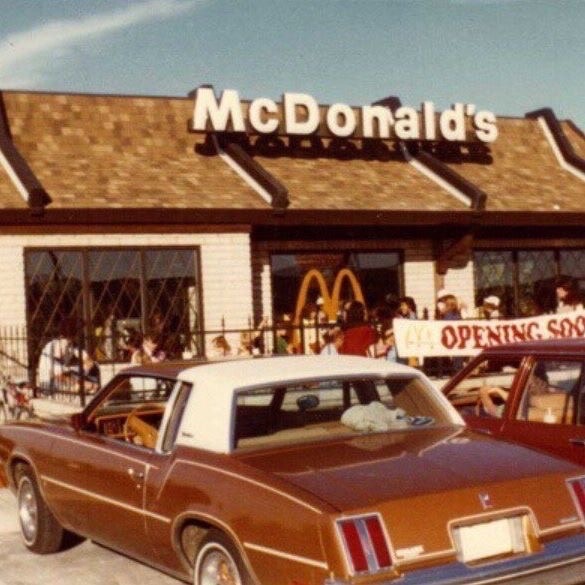Does a full-time U.S. worker at McDonald’s make just $7,000?

“The median pay for a McDonald’s worker was $7,000 in 2017. And that is the pay gap between the CEO that’s making 21.8 [million] to the 7,000 [dollars] that a worker who has put in 40 hours [a week] gets paid. To me, that just morally does not sit well.”
Rep. Ilhan Omar is in the news these days for her commentary on congressional supporters of Israel, which Democratic leaders have labeled anti-Semitic. That’s not something we can easily fact check, but even before this controversy erupted, we got a query from a reader about her statement above: “Do McDonald’s workers really only make $7,000 a year? That seems far below the minimum wage.”
Let’s check the math.
The federal minimum wage is $7.25 an hour, though many states have higher minimum wages. Assuming a 40-hour week, that works out to just over $15,000 a year, or more than double $7,000.
Terrence Wise, a 39-year-old shift manager at a McDonald’s in Independence, Mo., during the House hearing on whether to raise the federal minimum wage to $15 an hour.
Subscribe to the Post Most newsletter: Today’s most popular stories on The Washington Post
She noted that the chief executive of McDonalds, Steve Easterbrook, earned $21.8 million in 2017. “Can you share with us what someone in your position at McDonald’s gets paid annually?”
“Not that much. Not even a fraction of that,” Wise replied. “I make $11 an hour at my job, currently.”
Hmmm. An $11 an hour job adds up to $22,880 a year. That’s three times $7,000.
So where does Omar get her numbers?
A spokesman said that she was referring to an article in Nation’s Restaurant News that relied on a required disclosure in McDonald’s 2018 proxy statement about the “pay ratio” at the company. As a result of the 2010 Dodd-Frank Act, publicly traded companies must show how the pay of their chief executives compares with the compensation of their median employees. McDonald’s is a global company, so the median figure is for all employees around the world.
“The Company considered all full time, part-time, seasonal and temporary workers employed on such date,” the disclosure said. “Our methodology was straightforward and transparent; we did not exclude employees or make any adjustments to compensation. Using this methodology, 2017 total compensation for our median employee (a part-time restaurant crew employee located in Poland) was $7,017.”
But Omar was not talking about part-time workers, let alone one in Poland. She referred to 7,000 [dollars] “for the worker who has put in 40 hours a day.” (The spokesman said she misspoke, and meant a 40-hour week.) The article in Nation’s Restaurant News did not note that the $7,000 figure was for a part-time worker in Poland.
McDonald’s says it pays U.S. workers much more than $7,000 a year.
“McDonald’s starting wage at corporate owned and operated restaurants is above the federal minimum and our average wage for hourly workers is more than $10 per hour, which is why overly general characterizations of the wages we offer can be misleading and inaccurate,” said Lauren Altmin, a spokeswoman at McDonald’s.
Assuming at least $10 an hour, that’s $20,800 a year. (About 90 percent of the U.S. restaurants are franchise-owned, but the wage structure is generally similar.)
Altmin added that “employees can earn paid leave, have flexible schedules, and have access to up to $2,500 in prepaid college tuition as well as the ability to enter free high school diploma programs, English as a Second Language classes and education and career advising services through Archways to Opportunity.”
Finally, there’s data from Payscale, which provides a bit more granular detail: an average of $8.31 for a fast-food worker and $10.63 for a restaurant manager. That’s $17,285 and $22,110 a year, respectively.
Any way you slice it, Omar’s citation of $7,000 a year is way too low for a U.S. hourly worker at the company.
Still, we should note that the pay differential between the McDonald’s chief executive and median worker is huge: 3,101:1. That’s the worst ratio among 17 public restaurant companies — and the third-worst among public companies. Even if the ratio were adjusted to the average U.S. wage, the pay differential would exceed 1,000:1.
Even that is more than three times the 312:1 CEO-to-average-worker ratio in 2017 for the 350 largest firms in the United States, according to an analysis by the left-leaning Economic Policy Institute. An anonymous survey of 356 companies by Equilar, an executive data company, found the median CEO pay ratio across all submitting companies was 140:1, and the average was 241:1.
Easterbrook’s pay was nearly double the next-highest restaurant executive’s pay. The company, in its SEC filing, noted that more than 90 percent of Easterbrook’s pay is “at risk” vs. objective targets and that the company had gained $36 billion in value during 2017 as a result of “a transition from turnaround to growth.”
The CEO-to-worker pay ratio was 20:1 in 1965 and 58:1 in 1989, according to EPI, with much of the difference to today’s ratios due to “stock-related components of CEO compensation (stock awards and cashed-in stock options), not by changes in salaries or cash bonuses.”
JUST Capital, a nonprofit that ranks and measures companies according to various criteria important to Americans, puts McDonald’s very low on its list, in the bottom 10 percent of nearly 900 companies. The company does especially poorly on paying its workers a living wage, according to JUST Capital, with only 10 percent of U.S. workers making enough money to cover costs for food, housing and medical care.
Omar can point to a document filed with the SEC for her data point and can certainly raise pointed questions about the pay gap at McDonald’s between the chief executive and the typical worker. But her statement lacks context. The $7,000 figure is for a part-time worker in Poland, not a full-time worker in the United States as she suggested.
Omar relied on an article that did not make clear the caveat in McDonald’s disclosure, But we always warn politicians (and their staffs) that it is important to check the original source, as news media accounts may be inaccurate or misleading.
Omar earns two Pinocchios.



